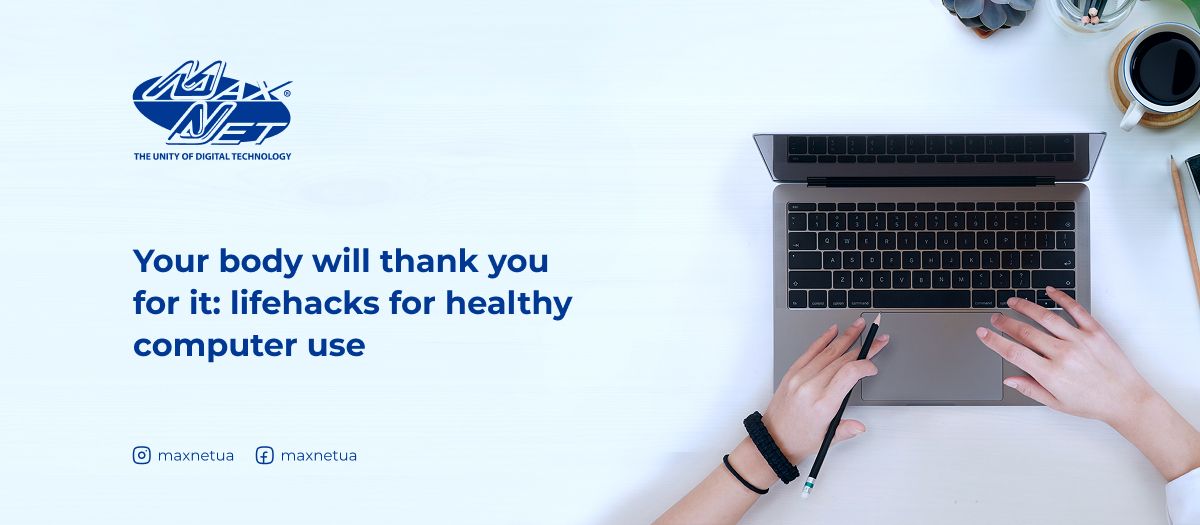
Modern life is impossible without a computer — from work to study and leisure. But prolonged time in front of a screen, incorrect posture and lack of breaks can lead to serious health problems. In this article, we will look in detail at how to organise a comfortable workplace and form a proper routine to reduce the negative impact of the computer on human health.body will thank you for it: lifehacks for healthy computer use
Correct posture and body position
When working at a PC or laptop, you need to keep your back straight. Therefore, it is important that your work chair or stool is comfortable and supports your back. Otherwise, you will have to do exercises for shoulder and neck pain. For lumbar support, it is best to use an orthopaedic chair or pillow. To stabilise the position of the spine, the buttocks should be deep in the chair.
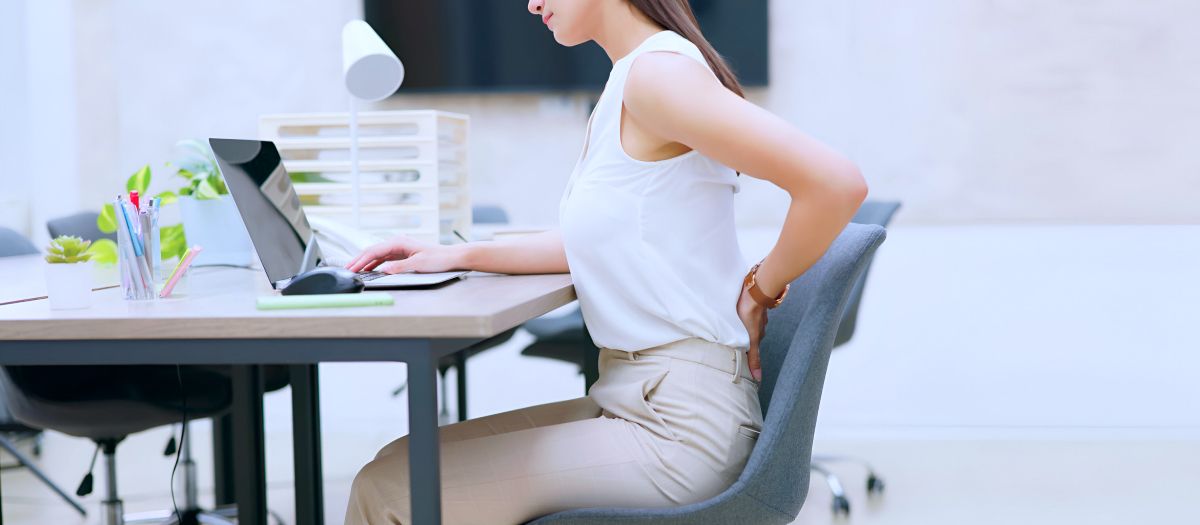
Keep your knees at or slightly below your hips. Make sure that the knee joints are bent at an angle of approximately 90-100°.
Your feet should be completely on the floor. If not, use a footrest.
Elbows should be relaxed, not raised, bent at an angle of 90-100°. Forearms — lie parallel to the floor or slightly tilted downwards. It is worth using a keyboard/mouse stand to keep your wrists from bending.
Instead of a desk chair, you can occasionally use a gymnastic ball (fitball). Sitting on it allows you to avoid the bad habit of crossing your legs, relieve tension from the spine and simply lift your mood. Here it is important to choose the right fitball — so that its diameter corresponds to your height, as well as inflate it to such an extent that you can effortlessly rest your feet on the floor. The angle between your torso and thigh in this case should be approximately 90 degrees, just like when sitting on a chair or a chair.
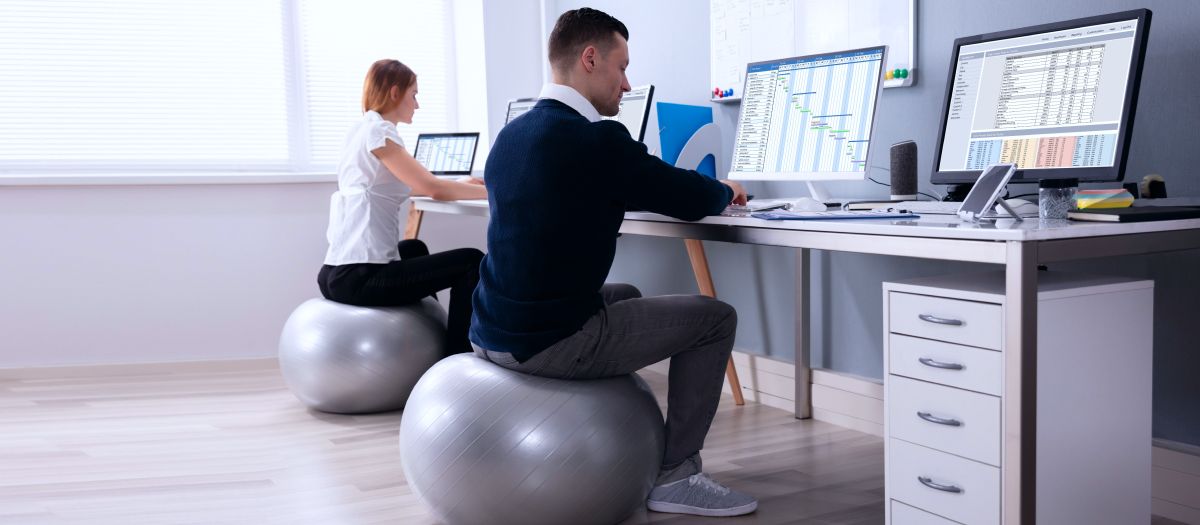
And it will also be useful to perform leg exercises, in particular, to lift your heels without getting up from your desk. Thus, according to research by a team of scientists from the University of Houston, the use of the largest muscle of the leg — the flounder muscle, which is also called the “second heart” — helps to improve the overall metabolism. The exercise involves sitting down, placing your feet on the floor, relaxing your leg muscles and raising your heels so that the front of your feet remain in place. When the heels reach the maximum of their range of motion, passively bring the foot back down.
It also doesn't hurt to think of a modern disease like carpal tunnel syndrome. It is also referred to as a disease of office workers and other professionals whose activities involve static hand loading and flexion-extension movements of the fingers of the hand, as when using a mouse. One of the ways to prevent tunnel syndrome is to use a mouse of vertical design instead of the traditional horizontal one. Such a gadget is designed with the anatomy of the hand in mind, which reduces stress in the wrist and forearm.
Eyes: care and prevention of fatigue
Prolonged work at the PC puts considerable strain on the eyes. To avoid overworking them, the distance from the monitor to the eyes should be about 50-70 cm (approximately an arm's length away). The top edge of the screen should be at or slightly below eye level. Computer safety also includes the correct setting of the monitor.
For optimal lighting in the work area, use natural light supplemented by effective artificial lighting. According to the rules of safe computer use, light sources should be positioned to avoid glare on the PC screen and minimise glare on the work surface. Ideally, the light should shine from above or to the side of the workstation, but not directly into the screen.
To minimise glare, tilt the display back slightly (5-10°). Keep your gaze at an angle of 10-20° downwards. To avoid reflections from windows or lamps on the screen, use matte filters or dimmer controls.

The keyboard backlight is a useful feature. It helps to reduce eye strain, especially when working in a dark or poorly lit room.
It is recommended to blink every 5 seconds while sitting at the computer for a long time, especially if you feel discomfort in your eyes. Such a kind of massage of the eye provides moisturising of the cornea.
It is also advisable to follow the 20-20-20 rule when working at a PC: every 20 minutes for 20 seconds look at an object located at a distance of about 6 metres. This reduces the risk of digital eye strain.
To reduce dryness, irritation and discomfort during prolonged work at the computer, especially in air-conditioned or low humidity conditions, use moisturising eye drops.
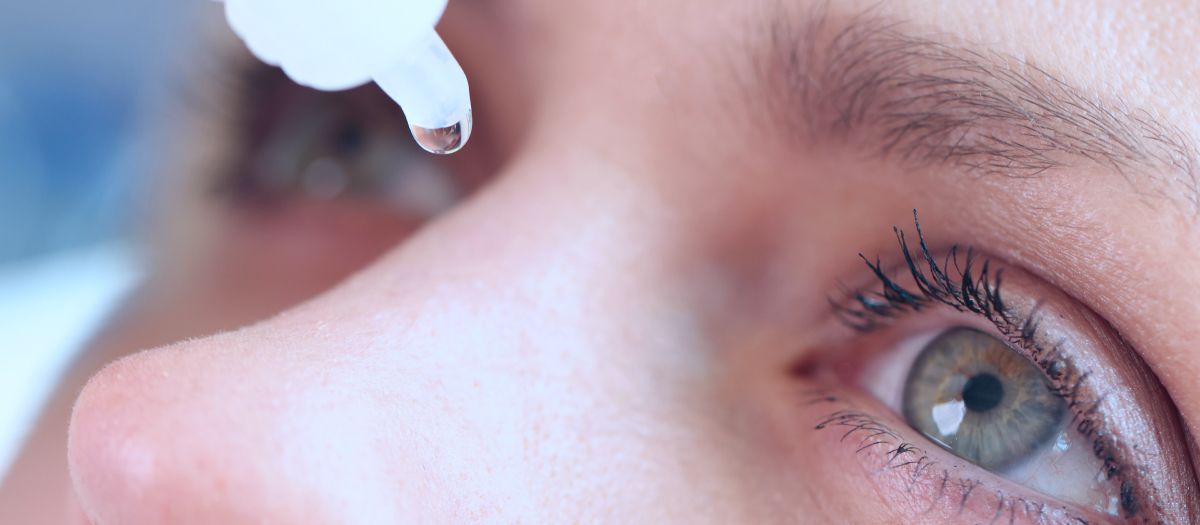
Reducing the intensity of blue light can help keep your eyes healthy. Some monitors have built-in blue light filters or software that reduces blue light intensity to help reduce eye fatigue. To eliminate flicker and minimise blue light, some monitor models are enhanced with Less Blue Light and Anti-Flicker technology. As a preventive measure, ophthalmologists recommend wearing special glasses with a Blue Light filter, which reduces eye strain and reduces the risk of insomnia, especially when working in the evening.
Gymnastics for vision is also a good prevention of eye fatigue. You can find comfortable exercises to relax your eyes and restore your vision using websites such as Blimbs or apps such as BeStronger, Oki, VisionUp.
Breathing, micro-breaks and work routine
When doing work that requires attention, a person at a computer may be so focused that they unconsciously hold their breath. In such cases, it is helpful to practice deep diaphragmatic breathing:
Inhale through the nose.
Exhale slowly through the mouth.
Repeat several times an hour, especially during times of stress.
If you're wondering “What time of continuous work at the computer is acceptable?”, there is no clear answer. But if possible, it is recommended to take a break every 30-60 minutes: get up, do a 5-minute stretch or take a walk. For convenience, you can use timers or special programmes like Stretchly, EyeLeo, Workrave.
If you like to work with music, full-size, wired, closed-back headphones are the best choice for comfort and sound isolation. You should be careful with vacuum headphones, as listening to music at high volume for long periods of time can lead to tinnitus or difficulty hearing sounds over time. Either way, remember to limit the volume and control the time you listen to music to give your ears a rest.
It's also a good idea to start the day with a short exercise, which has a positive effect on the nervous system and fills the body with vigour and energy. To maintain good health during the tasks, ventilate the room, and do not forget to take regular breaks for eating and drinking. And at the end of the day, “switch off” — don't work from bed or use your laptop before bed.
Tips for working semi-reclined
Lying completely horizontally while working on a computer or laptop is not recommended. But there is a place for semi-recumbent posture — for example, when you are ill or travelling.
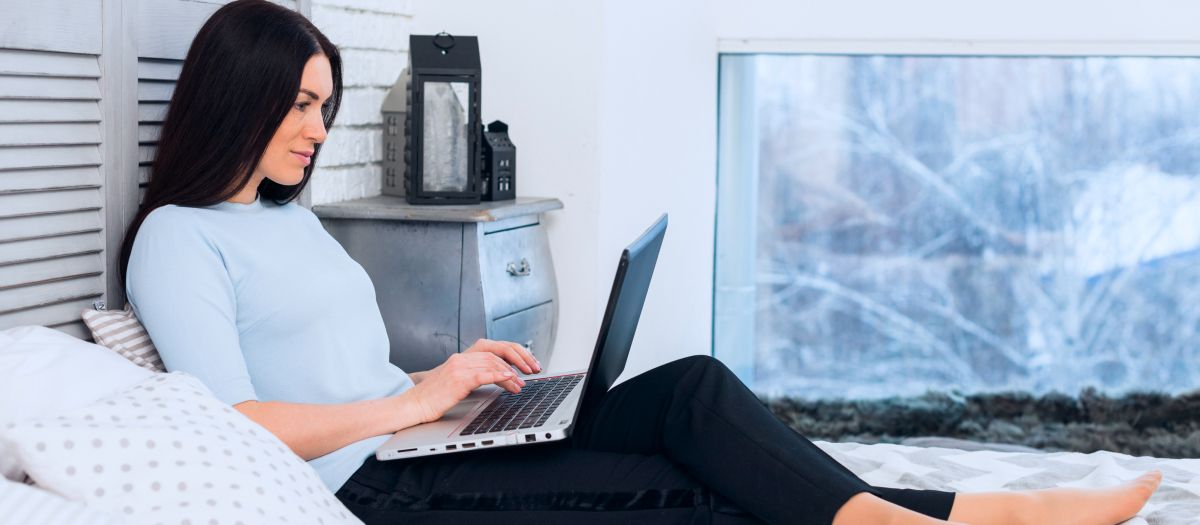
In order to work properly at the computer half-lying, we advise the following:
Place pillows under your head and back to avoid straining your neck.
Place a cushion or bolster under your knees to reduce strain on your lower back.
If you work lying on your stomach, place a small pillow or bolster under your lower back and a pillow under your chest for proper spinal curvature.
Use a laptop table or adjustable stand.
Support your arms with pillows or a folded plaid if necessary.
Remember to take breaks and change positions every 20-30 minutes.
Recall that the computer and health are strongly linked. Therefore, such simple and effective steps as proper workplace organisation, correct posture, eye care and regular movement will protect you from future problems. Listen to your body, adopt healthy habits and you will notice how comfortable and safe working at the computer becomes for you.
Еще комментарии








Володимир
16.07.2025
0
0
Reply